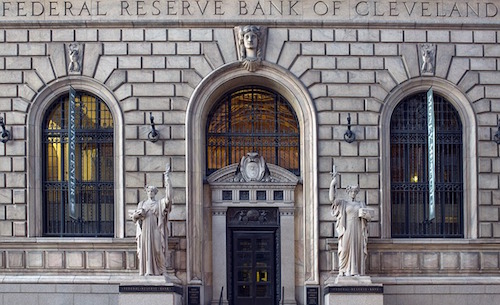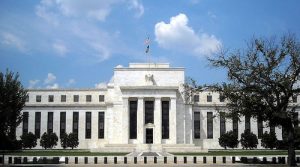The Federal Reserve System, Part Two
Tools and Relevance in Reporting
This is part two of a series about the Federal Reserve System. You can view part one here.
William McChesney Martin was the Chairman of the United States Federal Reserve Bank from 1951 to 1970. He is the longest-serve Fed Chairman in US History.
In Oct. 1995, Martin was giving a speech to the Investment Bankers Association of America and he famously described the Fed as the, “chaperone who has ordered the punch bowl removed just when the party was really warming up.”
The Fed has to make the tough decisions in order to keep the US economy running smoothly. It often faces criticism and scrutiny from the financial sector, legislators and even Presidents.
How does the Fed actually carry out its mission? There are many answers to that question because the Federal Reserve System’s responsibilities are extensive. It’s a disservice to the breadth of their work, but this section will look at the three biggest levers they pull to influence the economy.
Reserve Requirements
The reserve requirement is the amount of money a bank must have on hand in their vaults or stored at their regional Fed bank. A reserve requirement is in place to ensure that the bank has enough money if customers want to pull their money out of their accounts.
This requirement does not apply to all banks. Small banks have no reserve requirements, but bigger banks that handle more money are held to larger reserve requirements.
When the Fed sets lower reserve requirements, banks are not required to have as much held in reserve. Consequently, banks can give out more loans and liven up a local economy. This is a technique in expansionary monetary policy.
A higher reserve requirement means banks have to hoard cash, and that the Fed is attempting to keep the economy from overheating. This is an operation under contractionary monetary policy.
The reserve requirement is a simple percentage, which can change every year. You can read more about how requirements are set and which size banks follow each requirement here.
In one sentence: The Fed regulates the amount of money a bank has to hold in reserve at any given time.
The Discount Rate
As detailed above, the Fed requires banks to have certain amounts of cash on-hand. But each night banks fall short of these requirements they have to borrow money from each other.
When banks borrow money from each other, they charge interest. Banks can borrow money from the Fed, who also charges interest. This is where the Fed gets the title, “Borrower of Last Resort” because if a bank needs a loan and no other banks will give one to them, that bank can always get a loan from the Fed.
The discount rate is the interest that the Fed charges on its loans to banks. It’s also called the primary credit rate. These loans are given out through the Fed’s discount window. The discount rate is not the same as the federal funds rate, which is the interest banks charge each other to borrow money.
As of Sept. 2019, the Fed’s discount rate is 2.5%.This number is the baseline rate that affects interest rates throughout the rest of the economy. As this rate moves, all other rates follow.
In greatly simplified terms, having a higher discount rate means that it’s expensive for banks to get money. Ultimately, this means that it’s more expensive for consumers to get loans. This is contractionary monetary policy.
Conversely, a lower discount rate means it’s cheaper for banks to borrow money. This means interest rates will ultimately be lower for consumers looking for mortgages, car loans and student loans. Lower interest rates encourage spending as a part of expansionary policy.
In one sentence: The Fed sets a benchmark interest rate that impacts everything from bank to bank loans, to the interest rates paid on savings accounts.
Open Market Operations
This tool is all about US Treasuries. US treasuries, or bonds, are basically IOU notes that the government issues with the promise of a small return on interest down the line for bondholders.
The bond market is complicated. But in simplistic terms, the Fed is able to buy and sell such large amounts of treasuries that it dictates conditions for the rest of the market.
The Fed’s open market operations mean that they purchase or sell these bonds on the market. By buying and selling treasuries, ultimately controlling the supply of money.
A big sale of these bonds means that banks and investors will buy them up and shrink the total money supply. When the Fed goes into the market and buys bonds, that means that banks and investors have to spend their money in order places in the market.
In one sentence: The Fed buys and sells US Treasury bonds in order to control the supply of US Dollars in the economy.
Expansionary Policy
Lower Reserve Requirements
Lower Discount Rates
Buy U.S. Treasuries
Contractionary Policy
Higher Reserve Requirements
Higher Discount Rates
Sell U.S. Treasuries
Relevance in Reporting
The Federal Reserve System is like the backstage crew of a play. They’re running around behind the scenes ensuring that the show runs smoothly for the public. The system is both unwieldy and essential. Any business reporter needs to understand how consequential the system is for economies all of sizes.
Whether they know what the Fed is or not, all readers are impacted by what they do. They can be impacted directly when applying for loans or opening savings accounts, and indirectly by moves made in Washington.
Every move the Fed makes ripples through the US and across the globe. As a journalist working to contextualize business news, those on the business beat need to have an understanding and curiosity about this institution.










